Farmers Weekly Awards 2024: Sheep Farmer of the Year finalists
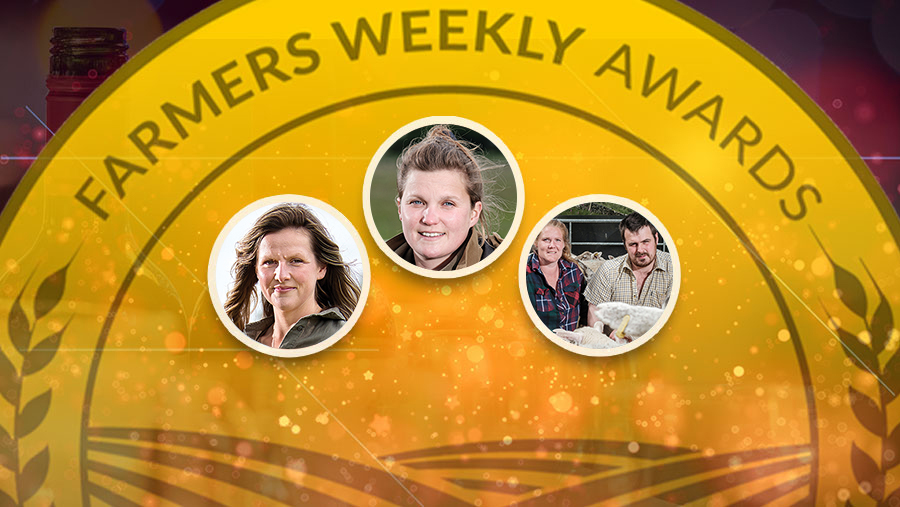
This year’s finalists, all in their early 30s, show excellent will and stockmanship in their thriving operations.
Finalists
- Annie Carr, The Brays, Worcestershire
- Rachel Murdoch, Fridlington Farms, North Yorkshire
- Samantha Shuttleworth and Oliver Brown, Shaw Paddock, Cumbria
The judges
Moira Gallagher – A farm consultant with a specialist interest in sheep production, Moira is based in the Scottish Borders at SAC Consulting’s St Boswell’s office
David and Cora Cooper – Winners of Farmers Weekly’s Sheep Farmer of the Year 2023, David and Cora run a low-input sheep system on rough hill ground in Ayrshire
Judith Tooth – Farmer’s Weekly’s Livestock editor with a particular interest in the role of livestock in sustainable farming systems
See also: Farmers Weekly Awards 2024: The shortlist revealed
Annie Carr, The Brays, Worcestershire
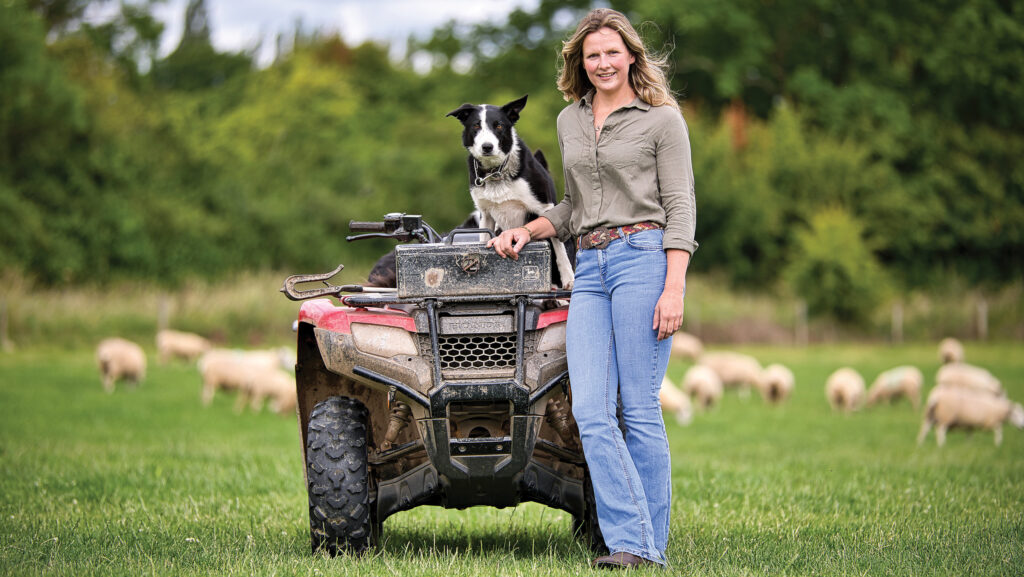
Annie Carr © Richard Stanton
Annie Carr runs a simple system: she buys in replacements for her crossbred flock and uses a terminal sire to produce fast-growing lambs.
Her focus, she says, is kilos of lambs reared a ewe and weight produced a forage hectare.
Annie is a keen rower and had her sights set on international competition until injury ended a potential sporting career.
She graduated with a degree in geography, and travelled and worked in Australia, New Zealand and the Falklands, before returning to the family farm for five years.
Succession issues then forced a new direction, and she started her own sheep business in 2020.
Flock management
Annie bought 125 Aberfield cross Romney ewes and 75 ewe lambs from the family flock and has since built numbers to 420 ewes.
Her regular supplier of replacements recently ceased trading, so she has introduced EasyDam cross Romneys and Aberfield cross Beulahs.
All replacements are quarantined and lambed separately from the main flock.
Aberblack tups are bought direct from the breeder, selected for good growth rates and a bit of positive fat from those animals that have been rejected because they have the wrong colour face.
Annie runs the flock single-handedly – apart from help from her mother with pet lambs –alongside contract shepherding work, in a 30/70 split of her time.
“Grassland is imperative to my system,” she says.
Four- to five-year herbal leys are grazed rotationally as part of an arable rotation on rented land.
These make high-quality silage and their anthelmintic properties lower worm burdens, reducing reliance on drenches.
Ewes are housed from December to give the grassland four months to rest and recover, before spring turnout after lambing. This helps produce high-quality grazing to aid lactation.
Annie measures and monitors grass growth using a plate meter and takes additional cuts of silage from surplus grass to minimise forage wastage.
Once lambs start being drawn, paddocks are further subdivided to improve grazing efficiency.
At lambing, every ewe is turned over and lambs are suckled.
She uses a Brix refractometer to check colostrum quality, with triplets and ewe lamb twins supplemented with powdered colostrum or when quality is poor.
Along with high levels of cleanliness in the shed, this protects lamb health, with levels of watery mouth, joint ill and general ill thrift “close to none” on a yearly basis.
Finished lambs
More than 50% of lambs are ready for slaughter at weaning and all have left the farm by October. Average daily liveweight gain is 390g/day, with singles “pushing 500g”.
Of this year’s 400 lambs, the first 23 lambs finished off the ewe in mid-June this year, followed a fortnight later by a batch of 98. These were drawn at 38kg and averaged 19.38kg deadweight.
“Selling deadweight means I have a kill sheet back within a few hours of the lambs leaving, and I can ensure I keep sending lambs that fit the specification,” says Annie.
This year, she took advantage of the Farming Equipment and Technology Fund to buy an electronic weigh system for more accurate weighing and monitoring growth rates.
Annie uses AHDB Farmbench to monitor her input costs and track profitability, and she has been part of the AHDB Progressive Sheep Group.
“Knowing your costs is crucial to a successful and resilient business,” she says.
Her strategy is to build cash through her contract work and run a simple system of her own.
She is confident that increasing flock size to 500 will improve output without putting too much strain on the business’s resources.
In numbers
- 2.14% lambing losses from scanning to finishing
- 73.55 total liveweight of lambs reared a ewe (kg)
- 853 lamb produced (kg/forage ha)
- 175% rearing percentage, including ewe lambs and shearlings
Farm facts
- 420 crossbred ewes
- All flock replacements bought in
- 20ha rented land growing herbal leys and forage rape in an arable rotation, and 6ha on short-term grazing agreements
- All lambs reared to finishing weight and sold deadweight to ABP
- Cull ewes and rams sold at Ross-on-Wye market
- Additional contract shepherding work
Judges liked
- Clear business focus and considered approach to decision-making
- Well organised, with close attention to detail
- Excellent soil and grassland management
- Fantastic growth rates – 25% lambs finished by early July
- Smart tup-buying policy
- Diversified income that complements the flock
What the judges say
“Annie runs a robust system. She achieves impressive growth rates in her finished lambs, knows her costs and runs her business successfully without subsidy. Though young, she is planning for succession.”
Rachel Murdoch, Fridlington Farms, North Yorkshire
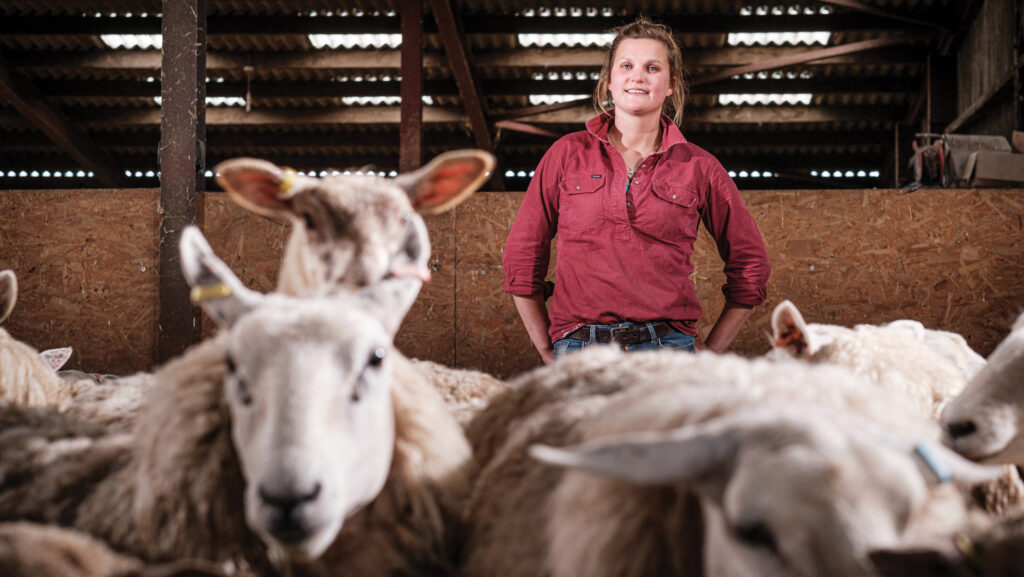
Rachel Murdoch © Jim Varney
Sheep are an integral part of operations at Fridlington Farms in the Vale of York.
The flock of 2,000 pure Highlanders and Highlander cross Aberfield ewes graze grass leys that form part of the arable rotation on a former Canadian airbase.
Rachel Murdoch grew up on the farm and has looked after the closed flock for the past six years, following in the footsteps of her father, who was shepherd for 38 years.
Rachel has day-to-day charge of the enterprise and liaises closely with farm owner Stuart Stark.
Sheep system
The purebreds are put to Highlander or Aberfield tups to breed about 500 flock replacements a year.
Choice of terminal sire for the crossbreds is under review, with finished lamb performance from New Zealand Texel, Aberblack and SuffTex tups being assessed.
All lambing is outdoors and runs for five weeks from early April.
In the past three to four years, Rachel has driven down barren rates from 5% to 2.5%, which she puts down to flushing and tupping the crossbred ewes on better grass.
Scanning rates this season were up by 10% to 170%, helped by a pre-tupping mineral drench for all ewes.
In winter, sheep feed on turnips and fodder beet with a grass or stubble runback to rest the grazing land.
This means a full set of good teeth is essential, so ewes with substandard mouths are culled, as are any treated twice for bad feet.
At lambing, those with big teats, a low-hanging udder or contracting mastitis are marked to cull at weaning and sold through Thirsk market.
“I don’t keep any females off any ewe that I have had to assist [at lambing] in any way,” says Rachel.
She constantly reviews growth rates of the lambs selected as flock replacements until just before they go to the tup as shearlings, to ensure they are the correct size.
Flock health
Working closely with her vet, bloods are taken annually from the flock to ensure nutritional needs are met.
Any correction to diets is made by adding specific vitamins or minerals to salt buckets or energy buckets.
In a bid to get away from routine worming of lambs, Rachel has trained to be able to carry out regular faecal egg counts. Ewes have not needed worming for the past five years.
Flock health is also protected with regular vaccinations including those for clostridial diseases and pasteurellosis, toxoplasmosis, campylobacter and foot-rot.
Rachel keeps track of daily liveweight gain using an integrated electronic identification tag reader, though a system upgrade is on order, so she can collect weight data through an app on her phone and switch to digital medicine records.
Finished lambs are sold from the end of July, killing out at 21-22kg. Batches of 150 are drawn each fortnight, with later crops brought in to finish on red clover silage and cake for two to three weeks.
Herbal leys
Last September, a 30ha (75-acre) field was sown to a herbal ley.
This was cut for silage before being split into six blocks with electric fencing for grazing lambs. The aim is to roll out a wholesale switch to herbal leys.
“It’s a learning curve for us all,” says Rachel, who hopes more lambs will be finished sooner as a result.
Rachel belongs to a women’s agricultural group, which meets monthly for farm visits and social events. She also enjoys taking part in sheepdog trials and has her own small flock of Teeswaters.
In numbers
- 2.5% barren rate (halved in three years)
- 7 working dogs
- 170% scanning rate
- 10% losses from scanning to tailing (at five weeks old)
Farm facts
- Closed flock of 2,000 Highlander and Highlander cross Aberfield ewes
- Part of 1,214ha business growing potatoes and cereals on sandy soils
- Lambing outdoors from early April
- Grazing on five-year leys in arable rotation, plus red clover and permanent pasture
- Lambs mainly finished on farm and sold to Dunbia
- Red Tractor farm assurance
Judges liked
- A young woman succeeding in a male-dominated setup, looking after 2,000 ewes single-handedly
- Synergy between arable and sheep enterprises
- Clear evidence of excellent shepherding skills
- Good knowledge of breeding requirements for system
- Costs driven down by lambing outdoors
- Proactive in farming community
What the judges say
“The sheep enterprise plays a vital role in the farm’s rotation, and Rachel’s skills and willingness to embrace new techniques and technology ensure it is in eminently capable hands.”
Samantha Shuttleworth and Oliver Brown, Shaw Paddock, Cumbria
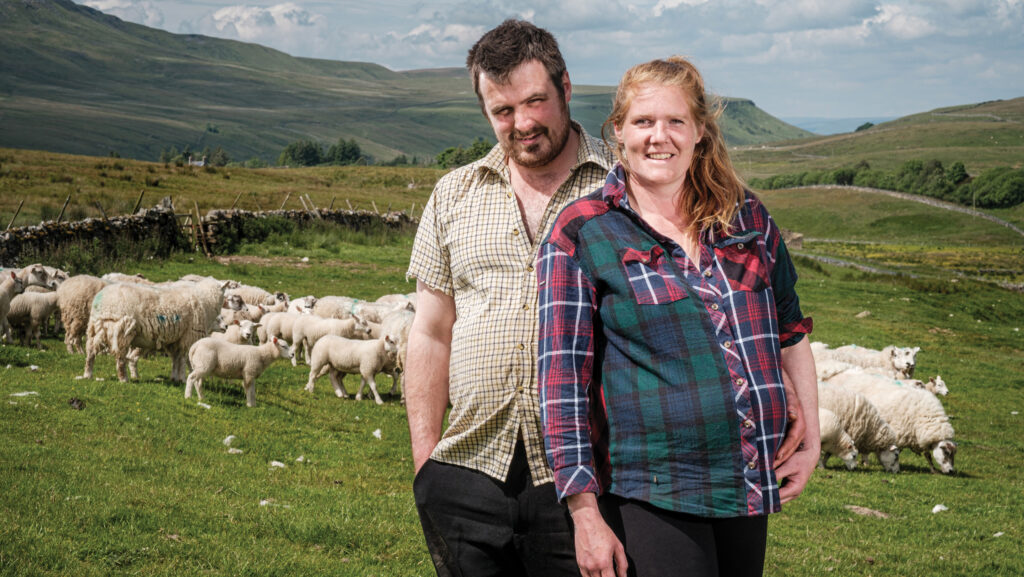
Oliver Brown and Samantha Shuttleworth, © Jim Varney
A couple since they were teenagers, Sam Shuttleworth and Oliver Brown grew up close to the hill farm they now rent.
Starting with nothing, they are now five years into a 10-year tenancy at Shaw Paddock, which sits close to the Carlisle-to-Settle railway line.
The couple, who live at the farm with their five children – Mabel age nine, Lilly eight, Nancy, four, Jim, three, and Sheila, just three days old when the judging team visited – have made the most of the opportunity presented to them.
“We hadn’t a penny when we came here,” admits Oliver – though Sam secured a £3,000 grant from the Henry Plumb Foundation to help get them started, and a mentor guided them through the first 12 months.
The journey has not been an easy ride: agreeing not to take any support payments in return for a manageable rent, they have sometimes struggled to make ends meet.
A two-year stint growing pigs on a bed-and-breakfast scheme was invaluable for early cashflow and work off-farm also helped pay the bills.
However, a developing suckler herd now brings in additional income.
Flock expansion
They have built equity by expanding their flock from 550 to 1,000 ewes, and their stockmanship skills and understanding of the challenging land they manage are clear.
As well as pasture and meadows on the lower land, Sam and Oliver have grazing rights on the fells either side of the valley.
Here, they run a hefted flock of pure Swaledales, which they took over from the landlord as a condition of the tenancy.
They also have pure Cheviots and “lowland” flocks of Texdales (Texel cross Swaledale) and Swaledale-crosses, which are put to a terminal ram such as Beltex.
Females are tupped as shearlings, with tups bought in mainly from Bentham, and Lockerbie for the Cheviots. Replacements are bred on farm, following a “scrupulous” selection process.
“Being on a hill farm, hardiness is key to battle the ongoing weather,” says Sam.
Lambing
The Swaledales are tupped on in-bye ground for two cycles before returning to the fell.
Scanning averages 135% and lambing begins in the second week of April.
Pure Cheviots also lamb outdoors, while the crossbreds, which scan at 165%, lamb indoors at the steading. Here, fodder beet, cake and haylage are given in the six weeks before lambing.
After lambing, singles are put to the fell while twins stay in-bye until they are marked.
Ewes and lambs graze meadows until 15 May before moving to better pasture, where they stay until weaning, running alongside the cattle.
After silaging, lambs move onto aftermaths, while ewes return to the hill until dipping. They come back for tupping in the last week of October.
The flock is treated with a flukicide four times a year and wormed as needed. Foot health is good and there have been no cases of enzootic abortion or Schmallenberg virus.
All sheep work is done at the steading, where there is a basic run. A team of six border collies, trained by Oliver, is essential for gathering.
Store sales
Lambs are sold as stores, fortnightly, at 35-38kg from early July to November at Bentham, Kendal and, sometimes, Hawes.
Pure Swaledales make £50-£60, while crossbreds make twice that. Ewes are sold on as three-crops.
Sam started posting videos on YouTube about “life on a hill farm” earlier this year.
Produced every other day, “Sam Shutt Farming” regularly gets 10,000-12,000 views for its engaging content on anything from twin lamb disease, to mowing grass and mucking out.
In numbers
- 33% of flock sold as draft ewes a year
- £105.50 average price for first batch of store lambs sold this year
- 150% target rearing percentage from crossbred ewes
- 5,800 subscribers to the “Sam Shutt Farming” YouTube channel
Farm facts
- 162ha, including 36ha an hour away for silage and winter grazing
- Mix of common fell grazing, pasture and meadows
- Land rises to 366m above sea level
- 1,000 sheep comprising flocks of Swaledale, Cheviot and crossbred ewes
- Selling store lambs from July to November
- 40 suckler cows with progeny sold as stores
Judges liked
- Tenacity and determination to succeed without subsidy
- Open to opportunities
- Excellent stockmanship
- Clear about breed characteristics needed for terrain and climate
- System developed to suit resources
- YouTube channel promotes farming awareness
- Management supports flocks of lapwings and curlews
What the judges say
“Samantha and Oliver have developed a system that suits the resources and constraints of their hill farm. What they have achieved in five years is testament to their determination and dynamic approach.”
A word from our sponsor 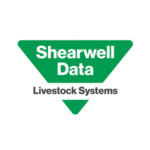
“Shearwell Data is proud to sponsor this category. The finalists have all demonstrated their commitment to the sector, with a progressive and innovative approach to sheep farming and willingness to be adaptable.”
Richard Webber, director, Shearwell Data
